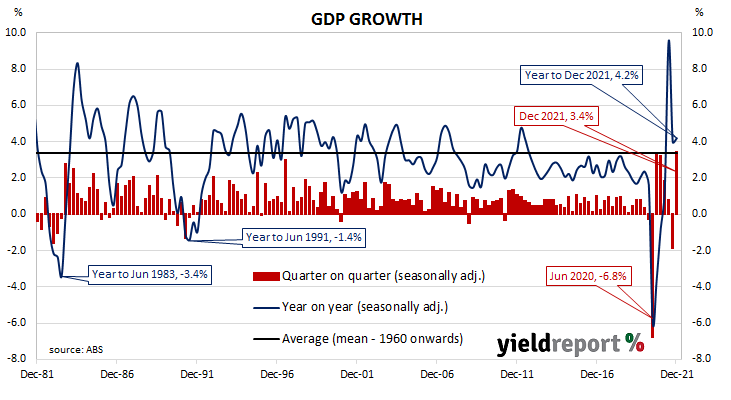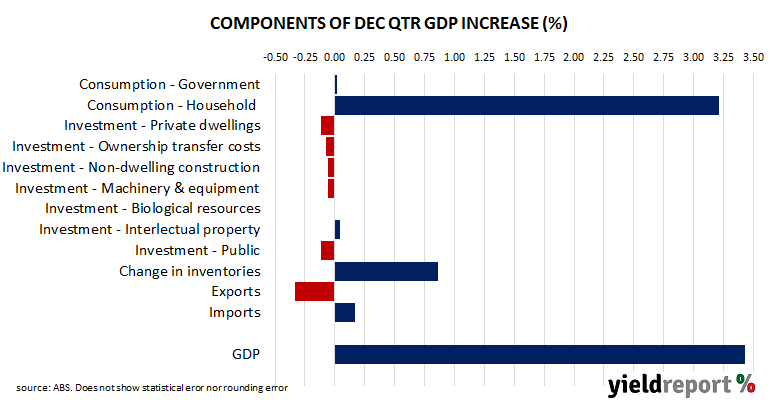Summary: Australia’s GDP up 3.4% in December quarter, better than expected; “relatively rapid rebound from delta disruptions”; RBA “will be comfortable with economy’s trajectory”; higher household consumption, inventories main drivers.
Since the “recession we had to have” as the recession of 1990/91 became known, Australia’s GDP growth has been consistently positive, with only the odd negative quarter here and there. However, Australia’s first recession in nearly thirty years was inevitable in 2020 once governments introduced restrictions which shut businesses and limited people’s movements for an extended period of time. Positive growth rates resumed in the September 2020 quarter until restrictions were reintroduced in eastern states in the September 2021 quarter.
The latest figures released by the ABS indicate GDP surged by 3.4% over the December quarter. It was a stronger result than the 3.0% rise which had been generally expected and in contrast to the September quarter’s -1.9%. On an annual basis, GDP expanded by 4.2%, up from 4.0% in the September quarter.
“The result represents a relatively rapid rebound from delta disruptions, evidence that households and businesses are continuing to adapt to the challenges of the pandemic,” said Westpac senior economist Andrew Hanlan.
Commonwealth Government bond yields fell heavily on the day following noticeably lower long-term yields in US Treasury bond markets. By the close of business, the 3-year ACGB yield had shed 10bps to 1.48%, the 10-year yield had lost 12bps to 2.08% while the 20-year yield finished 8bopss lower at 2.53%.
“While today’s result was a little less than the 4.5% implied by the RBA Statement on Monetary Policy forecasts, we expect that the Bank will be comfortable with the economy’s trajectory,” said ANZ senior economist Felicity Emmett.
Household consumption spending increased by $16.2 billion, or 6.3%, contributing 3.2 percentage points of the quarter’s 3.4% rise. A $4.3 billion rise in inventories contributed around 0.9 percentage points. Exports were $1.7 billion lower than in the previous quarter, subtracting 0.3 percentage points.



